
Unit Report : HAF 120 Air Training Wing
Hellenic Air Force 120 Air Training Wing - Kalamata
120 Pteriga Ekpedefseos Aeros - Where the young eagles learn how to fight
George Karavantos covers the Hellenic Air Force pilot training system and visited Kalamata to see the T-2 Buckeye and T-6 Texan II trainers.
The Hellenic Air Force’s 120 Air Training Wing (120 Pteriga Ekpedefseos Aeros - PEA) is located at the airport of Kalamata, in the Peloponnese region of Greece. The 120 ATW of the Hellenic Air Force Training Command is tasked with providing the cadets and 2nd Lieutenants with flight training, in order to make them skilled pilots, able to engage the duties and responsibilities as HAF pilots. For this mission the 120 ATW is equipped with a fleet of T-2 Buckeyes and T-6 Texans II trainers.
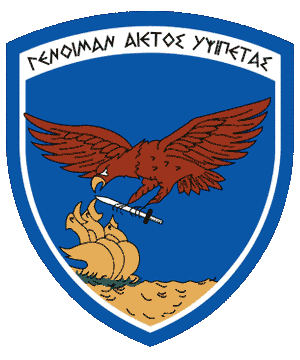




Unit's History
The unit was established in March of 1970 at Kalamata as the 120 Air Training Group. In May 1970 the first training squadron, equipped with the Lockheed T-33A Shooting Star, was transferred to the 120 ATG and the following month flight training commenced at Kalamata. The unit had been formed in 1957 as a training squadron of the 112 Combat Wing based at Elefsina as the 361 Aircraft Training Squadron. In 1962 it was reassigned to 114 Combat Wing at Tanagra. In 1974 it was renumbered and became the 362 Advanced Training Squadron “Nestor”.
The trainees were coming from the Cessna T-37C basic jet trainer, which belonged at that time to the 360 Jet Training Squadron based in Elefsina. This squadron was formed on the 9th of September 1963 at the 112 CW. In 1971 it was relocated to Kalamata airport becoming part of the 120 Air Training Group. In 1974 it was renumbered and became the 361 Basic Training Squadron “Mistras”.
In the 1970s Greece had one of its largest acquisition programs ever to procure new military aircraft, ordering the Α-7Η Corsair II, F-4E Phantom II, Mirage F-1CG and C-130H Hercules. To replace the ageing T-33s, the initial order for new T-2E Buckeye advanced trainers was signed on 17 June 1974. The agreement was for 40 aircraft and their deliveries would start approximately 20 months later. The price of each aircraft was around 780.000 dollars.
The 120 ATG received the first T-2E Buckeye advanced trainers in 1976. The squadrons to receive the new aircraft were 362 Squadron already at Kalamata and the reassigned 363 Squadron "Danaos", that was previously based in Larisa. The squadron was first established in 1972 with the 110 CW flying F-84F aircraft as the 361 Air Training Squadron. In 1976 the squadron converted to the T-2E and before being assigned to 120 ATG and moved to Kalamata in 1977.
With the third squadron added, the 120 Air Training Group officially became the 120 Air Training Wing in August 1977. In September 1978 the HAF received an additional eight T-37B from the USAF to supplement the T-37C fleet. In 1988, ten former Royal Jordanian Air Force T-37B models followed suit. In the late ‘90s, an extra 12 older T-2C from US Navy surplus arrived at Kalamata. They were used as attrition replacements and others mainly for spare parts.
The Tweety Birds were finally withdrawn from active duty in 2002, when they had been replaced by 45 new Beechcraft (at the time Raytheon) T-6A Texan IIs, which had entered service between August 2000 and May 2003. The T-6s initially delivered re-equipped 361 squadron. Established on the 22 February 2006, 364 Air Training Squadron “Pelops” received the rest of the T-6 aircraft and became the fourth squadron of the 120 ATW.
The existing squadrons of 120 ATW received the generic Air Training Squadron (Mira Ekpedefsis Aeros - MEA) name in March 2006, dropping the Basic/Advanced differentiation in the past nomenclature.
Training Syllabus
The Training Syllabus for the ab initio pilots consists of 5 phases: Screening, Initial, Basic, Advanced and Operational.
The training of the Hellenic Air Force pilots starts at Tatoi-Dekelia with 360 Air Training Squadron on the Cessna T-41D Mescalero, where the young recruits in pursuit of becoming a HAF pilot get their elementary flying lessons as part of the screening phase. The phase lasts 3 months and comprises of the initial evaluation and selection of the cadets who will be able to continue their flight training. The trainees fly up to 16 sorties and log around 19 hours.
The selected cadets then move on to 120 ATW at Kalamata for the initial phase of their pilot training. The trainees fly the T-6 with 361 & 364 Air Training Squadrons, involving around 48 sorties and 60 hours of flying. The objective of the initial stage is to provide the knowledge and skills required for basic flight procedures, meteorology, jet aerodynamics, aircraft systems handling and decision making. The end of this phase coincides with the completion of their second year in the HAF. During their third year the young pilots enter the third phase, the basic training phase and continue on the T-6. During these 5 months, the pilots fly only around 10 sorties and accumulate approximately 13 hours. The main objectives of this phase is to further improve their knowledge, competencies and skills acquired in the initial training and improve the students’ information handling and situational awareness. The basic phase incorporates a lot of IFR training. During all these stages, the students also continue the on-the-ground training, which incorporates computer based training (CBT) and simulator flight hours.
After the completion of the Basic phase the new pilots go back to Tatoi to finish their theoretical education. When they finish that, the new pilots swear oath and they become HAF officers. The young pilots go back to 120 ATW to commence their flying training with the T-2 Buckeye.
In the Advanced the young pilots transition to the Rockwell T-2 Buckeye with 362 & 363 Air Training Squadrons, where the students learn the art of flying a high performance jet aircraft. The new pilots log some hours at the T-2 basic flight simulators in order to learn flows and emergency procedure. The Advanced Training Phase lasts six months and is the final stage of their flying training. During this period the pilots, fly around 72 sorties and log around 84 hours of flight.
At the end of the Advanced phase the pilots are 'screened' and selected to fly fighter, transport aircraft or helicopters. The students destined to become fighter pilots continue on the T-2 to complete their weapons training before they join a frontline unit to fly the F-4 Phantom, the Mirage 2000 or the F-16. The Operational phase consists of Fighter Lead-In Training taking six months and the pilots fly 10 hours, involving air-to-air and air-to-ground operations along with exercises such as Basic Fighter Maneuvers (BFM) and Air Combat Maneuvers (ACM).
Upon completion of their training in Kalamata, each new fighter pilot will relocate to one of the main bases within Greece depending on the type of fighter aircraft. First, the inexperienced pilot joins the Operational Conversion Unit (Sminos Metekpedeusis - SMET) where he learns to fly the specific frontline fighter aircraft. After successful completion of the particular conversion course the pilot is considered Limited Combat Ready and will continue on active duty with a frontline unit. When more flying experience has been accumulated, the pilot will become Combat Ready.
T-6 Texan II
The T-6 is a development of the Pilatus PC-9, modified significantly by Beechcraft, which was part of Raytheon at the time. Designed for the US Joint Primary Aircraft Training System (JPATS) it was named after the legendary T-6 Texan pilot trainer of decades ago and also replaced the T-37 in US service. The T-6A Texan II is powered by a Pratt & Whitney PT-6A-68 turbo-prop engine providing 1100shp and has a climb rate in excess of 3,300ft/min (1,000m/min). The maximum cruise speed of the aircraft is 310mph (500km/h) and it has an altitude ceiling of 31,000 feet (9,500m). The cockpit was designed for similarity with modern fighter aircraft with Smiths Aerospace multi-function active matrix LCDs. In addition to the ‘digital’ cockpit, the T-6 also has a pressurized cockpit and Martin-Baker Mk.16 zero-zero ejection seats.
The Texan II fleet operated by the Hellenic Air Force consists of 25 standard T-6A and 20 T-6A-NTA models, the latter having six under-wing hard-points which are capable of carrying a variety of air to ground weapons for a limited ground-attack capability. The serial numbers of the T-6A version are 001 to 025 and for the NTA version 026 to 045.
Daedalus Demo Team:
Besides the training units at Kalamata, there's also the Hellenic Air Force's 'Daedalus' demo flying the T-6 Texan II. Nowadays the T-6 flown by the team carries the team’s paint scheme.
The Daedalus Team was established in 2005 with the intention of displaying the T-6 at the upcoming 'Archangel' airshow at Tanagra. Two USAF instructors came to Kalamata to train five instructor pilots from 361 Squadron in airshow display flying. Two instructors were eventually selected to provide the demonstration and represent the HAF training wing at the show. The training for the display routine began on 26 July 2005.
On Sunday 18 September 2005 the T-6A Aircraft Demonstration Team performed its first public display at Tanagra, during the International Air Show "Archangel" in the context of the festivities held to honor the Hellenic Air Force's Patrons, Archangels Michael and Gabriel.
Daedalus is now the longest ever lived display team through HAF history! "Daedalus" is enhancing the morale of the Hellenic Armed Forces, while, at the same time, it is showcasing the work of the Hellenic Air Force to the wide public. Inspired by Greek mythology, the team is named after Daedalus, who was the father of Icarus. The name Daedalus originated from the word “δαιδάλλω”, meaning "to work artfully". So, performing a display is, nonetheless, a work of aerial art. Additionally, the team consists of instructor pilots who, like modern Daedalus, pass on their experience, and "give wings" to their student pilots.
In 2015, the demo aircraft received a special painting to commemorate the teams 10th anniversary. The upper part of the aircraft depicts a huge waiving Greek flag. The design under the fuselage is based on the Icarus flight close to the sun, according to Greek mythology. Moreover, two of his inventions are displayed on the tail section, the caliper and the maze.
T-2 Buckeye
Developed for the U.S. Navy training needs the first YT2J-1 flew on January 31, 1958. Powered by a single 3,400 lb thrust Westinghouse J34-WE-48 fuselage-mounted turbojet, the initial T2J-1 production model first entered service in July, 1959. Manufactured by North American at Air Force Plant 85 in Columbus, Ohio, the name Buckeye refers to the state tree of Ohio. It was redesignated T-2A in 1962 under the joint aircraft designation system.
The single turbojet was soon replaced with two 3,000 lb thrust Pratt and Whitney J60-P-6 turbojets resulting in the T2J-2 or T-2B. The first of 97 new T-2B aircraft flew on May 21, 1965 and entered service in December, 1965. The final production model for the U.S. Navy was the T-2C fitted with two non-afterburning General Electric J85-GE-4 engines (similar to those used in the F-5 and T-38). 231 T-2C aircraft were produced, with the first production model being flown on December 10, 1968. The export customers of the type were Venezuela (T-2D) and Greece (T-2E). The T-2E for Greece was based on the T-2C but with a targeting system and was capable of carrying a wide variety of training weapons packages on two wing mounts. The production ended with the last delivery of the 40th T-2E to the Hellenic Air Force in December of 1976, by then a total of 529 T-2s had been built.
Regardless of its age, the T-2 provides the qualities required for a good training aircraft in terms of flying characteristics, control response, low stall speed and good stability. The T-2 is a rugged and forgiving aircraft, the wide-tread tricycle landing gear provides excellent control during takeoff and landing and the airframe is constructed to withstand carrier landings, inadvertent high g-loads and rough landings encountered during student training. The thrust-to-weight ratio and high limit load factor enable performance capabilities for advanced training.
Despite the advantages that the aircraft offers to the trainees thanks to its great characteristics, the T-2 is nowadays a very old aircraft! Besides the age of the airframes, there is also little commonality in the cockpit of the ageing Buckeye and the latest fourth generation Lockheed-Martin F-16C Fighting Falcons or the Mirage 2000-5 of the HAF. Apart from the T-6 Texans, the Hellenic Air Force training fleet is currently in need of major upgrade.
Nevertheless the aircraft can still provide valuable lessons to the young new pilots of HAF and the serviceable T-2s will definitely keep on doing so thanks to the large contribution of the maintenance personnel of 120 ATW!
Report and photos by George Karavantos ( view portfolio )
Last Modified: 22 April 2017
Update log
22 Apr 2017 added 40 new images
22 Apr 2017 revised Daedalus text
30 Oct 2016 fixed image loading
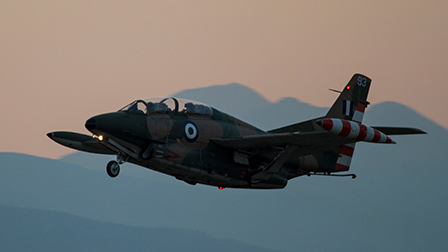

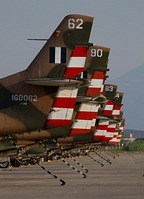







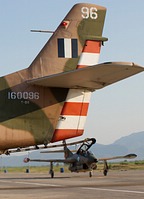
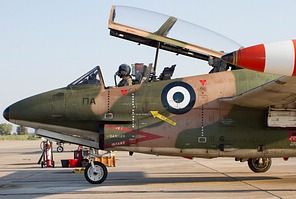
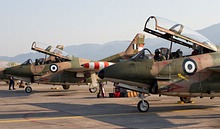
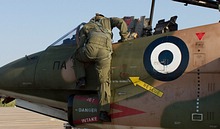





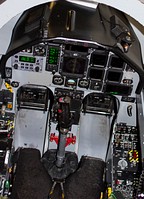
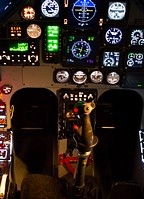



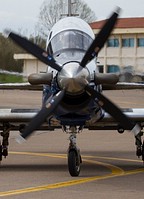







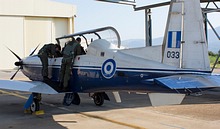

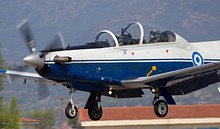
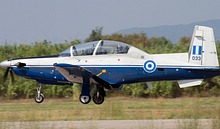
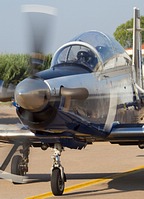
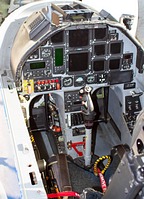
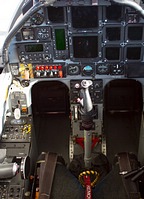

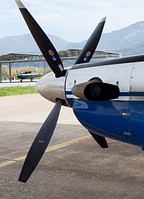
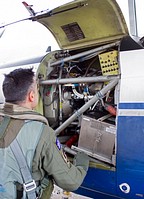
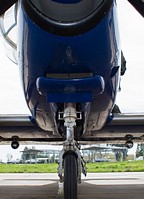





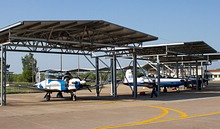
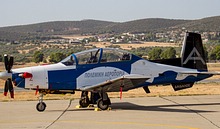





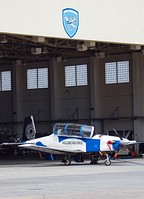








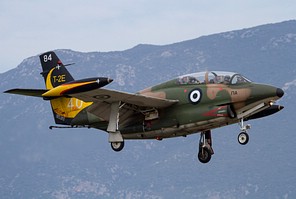


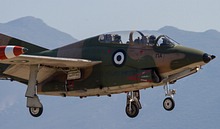









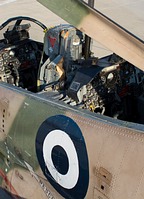
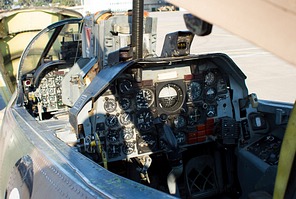
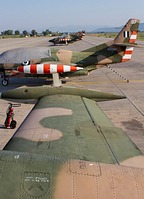


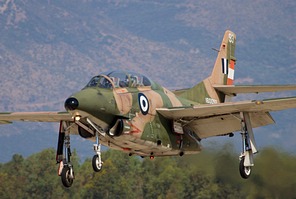

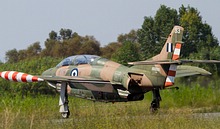
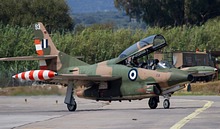
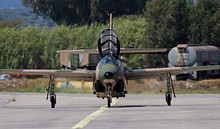
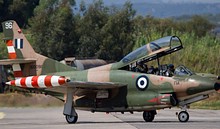

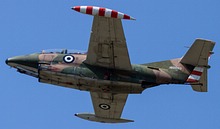
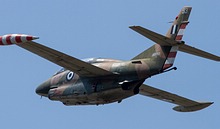
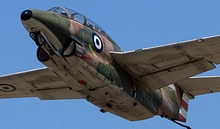
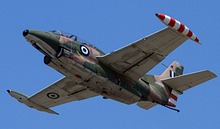
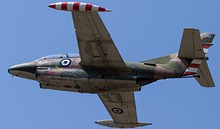
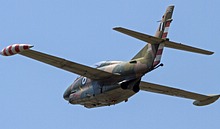
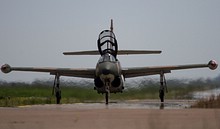
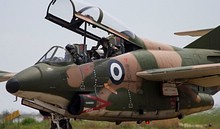






 Back to Index
Back to Index